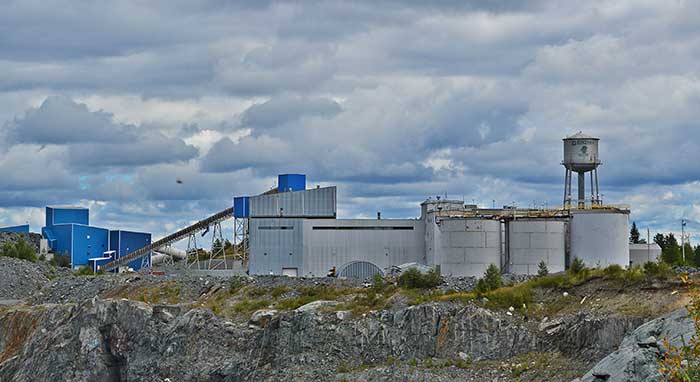VANCOUVER — The recent buzz around junior Integra Gold (TSXV: ICG; US-OTC: ICGQF) has mostly involved its production prospects after a mill-and-plant purchase at its Lamaque gold property in the heart of the Val-d’Or gold camp in Quebec. In early February, however, the company offered a reminder of the project’s exploration upside, with a resource update that incorporates 45,000 metres of new drilling.
Val-d’Or’s vein-type mesothermal structurally controlled deposits can be a bit tricky to nail down, and one of the main knocks against Integra amongst analysts has been the fact that Lamaque has a relatively short mine life.
The company published a preliminary economic assessment (PEA) in January modelling a 1,300-tonne-per-day operation that would produce 110,000 oz. gold per year at cash costs of $551 per oz. The kicker was that Integra’s model would exhaust stated resources in less than five years.
“There’s a great comparison to be made looking back at the historic Lamaque mining operation at the Main plug,” president and CEO Stephen de Jong said during an interview.
Teck Resources (TSX: TCK.B; NYSE: TCK) operated Lamaque from 1933 to 1985, and produced a total of 4.6 million oz. gold. De Jong added that, according to production stats, from 1958 to 1985 the mine never had a reserve base larger than 450,000 oz., but produced 2.1 million oz. during that period.
“If you peel it back to the PEA you’re still at an incredible high internal rate of return. We’re going to continue to add resources, but looking at it from a critical mass basis, we already have the economics in place we believe justify a production decision,” de Jong added.
Integra’s mine plan focuses on what the company is calling Lamaque South, with the recently acquired 2,200-tonne-per-day Sigma mine and mill complex constituting Lamaque North. The southern part of the project is home to the Triangle and Parallel zones, which host most of Integra’s in-situ gold ounces.
The company drilled 12,400 metres at Parallel since its last update, but it’s really Triangle that’s receiving the attention. The target was hit with most of the annual drill budget, with 33,000 metres allocated to infill and expansion drilling.
Assuming a 3-gram-gold-per-tonne cut-off grade, Lamaque South’s indicated resources jumped 40% year-on-year to 4.7 million tonnes grading 7.1 grams gold for 1.1 million contained oz. Inferred resources total 1.2 million tonnes of 8.4 grams gold for 331,000 contained oz.
Triangle carries most of the economic gold, with 2 million indicated tonnes grading 8.3 grams gold for 520,600 contained oz. and 604,700 inferred tonnes grading 9 grams gold, for 174,500 contained oz.
“What we’re seeing at Triangle is extremely encouraging. The gold we’ve added is at the same vertical depth as the previous resource estimate. It means for the same amount of underground development we’re accessing more ounces,” de Jong explained. “We really decided to focus on areas we thought had the potential for near-surface expansion. That’s why you saw so much more drilling take place at Triangle, where activities were generally split fifty-fifty between infill and step-out. Even then the results really exceeded our expectations.”
Perhaps most promising for Integra is that wider zones discovered in the lower half of Triangle appear to mimic the lower sections of Teck’s Lamaque operation. The thicker mineralized zone orientation suggests the potential for long-hole mining, which was the method that proved most productive historically at the mine.
Integra will drill Triangle hard this year, with 20,000 metres scheduled at the target. The focus will be on step-out drilling to test for lateral and depth extensions of the wider, high-grade zones. That’s only a small part of the company’s 50,000-metre program, however, which will also chase ounces not currently in the Lamaque mine plan.
“The mill has capacity, so if we can prove up resources at new targets we’re not just adding mine life, we’re adding annual production. There’s a big difference because our PEA production is based on 65% of the milling capacity,” de Jong said. “The focus is on confidence in resources, and that’s why we’re still drilling so much. I’d point out we’re also testing targets for new gold-bearing zones within the Lamaque South area.”
Before the Lamaque resource update, Integra’s PEA already had financial prospects. Assuming US$1,200 per oz. gold the mine would generate an 81% pre-tax internal rate of return and a 1.25-year payback.
Integra has traded within a 52-week window of 14¢ to 39¢, and had a six-month high of 30¢ per share at press time. The company reported working capital of $3.7 million at the end of November, and has 211 million shares outstanding for a $63-million market capitalization.


Be the first to comment on "Integra highlights Lamaque’s exploration upside"